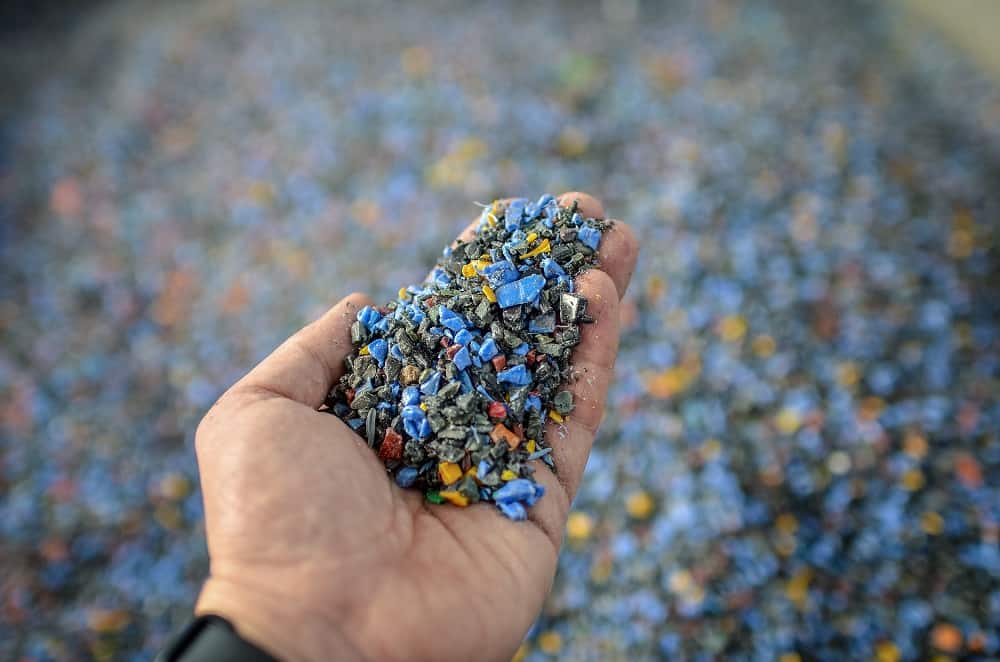Understand What Happens to Plastic When It’s Recycled

Recycling plastic has become second nature for many people in their personal lives, and many businesses that produce plastic waste have followed suit in recent years by become avid recyclers. In fact, it’s commercially generated plastic scrap that meets much of the current demand for recycled plastics despite the popularity of consumer plastic recycling. Because of the work of plastic scrap recyclers and the businesses that support them, plastic waste stays out of landfills and natural habitats and gets injected back into the supply chain for reuse.
Have you ever wondered exactly what happens to plastic scrap once it’s passed off to plastic scrap buyers in Michigan? Most people only see the finished result of the recycling process when recycled plastic products and containers reenter the marketplace. However, there’s a great deal of activity between the time the plastic is turned in for recycling and the time it’s once again ready to be used. Keep reading to follow along in the life of recycled plastic as it goes from refuse to reusable.
Step 1: Collection
Plastic that is to be recycled must first be collected from consumers, whether those consumers are individuals who want to see plastic from their households reused or businesses that can rid themselves of plastic waste in a responsible manner by recycling it. In either event, plastic scrap buyers acquire raw used plastic and serve as the starting point in the recycling process. Plastic collected curbside is transported to a sorting facility and divided up by type, while businesses have scrap plastic picked up by buyers.
Step 2: Sorting
At its second stop in the recycling process, plastic is sorted thoroughly. Some types of plastic are desirable for recycling purposes and some aren’t. Therefore, the unrecyclable plastics are pulled out and discarded, while other useful types of plastic are separated by their type. Other non-plastic items that may have been included with plastics are also removed and discarded. Plastics like HDPE, or high density polyethylene, are compressed and baled, while PET plastics such as those used in drink bottles are smashed into blocks and sold as-is as a commodity.
Step 3: Prep
Though the next step may differ depending on the type of plastic being recycled, with PET plastic such as drink bottles, the next step is preparation for the recycling process. The bales are broken up and sorted by color. They are then washed in warm soapy water so that they are properly cleansed, and the paper labels are removed by gentle agitation. The caps are also removed in the process, since they are usually made of a different type of plastic.
Step 4: Grinding
Once the bottles are thoroughly cleaned and the labels and caps are removed, the plastic is ground into tiny cereal-sized bits. After the initial grinding, the bits are washed again to remove any remaining debris or contaminants. For some recycled plastics, the remanufacturing process ends there, as the plastic flakes can be sold for use in non-food grade applications such as carpet or furniture batting.
Step 5: Melting
If the flakes are to be used as food or beverage containers, they must be properly sterilized before they can be recycled. That involves melting the plastic flakes down and putting them through an extruder which draws out long, thin strings of melted plastic and cuts them into pill-like bits. Those bits can then be used by manufacturers because they are uniformized and easy to melt and shape.
Step 6: Remolding
For plastics that are going to reenter the supply chain as food grade containers, the next step is remolding the plastic. The plastic is once again melted down, then injected into preformed molds for the desired containers such as drink bottles. Other types of plastics may follow a similar path, only to be melted down into a usable form and recast into other consumer items such as plastic tool handles, automotive components, or housewares.
The journey of plastic scrap from refuse to reuse is long and winding, but it’s worthwhile nonetheless to keep plastic out of landfills and seas. The average life of a plastic product is five centuries, so it’s important that it is treated as a renewable resource that can be used over and over with little impact to the environment. To learn more about what happens to plastic during recycling, contact Seraphim Plastics at (888) 423-1927.